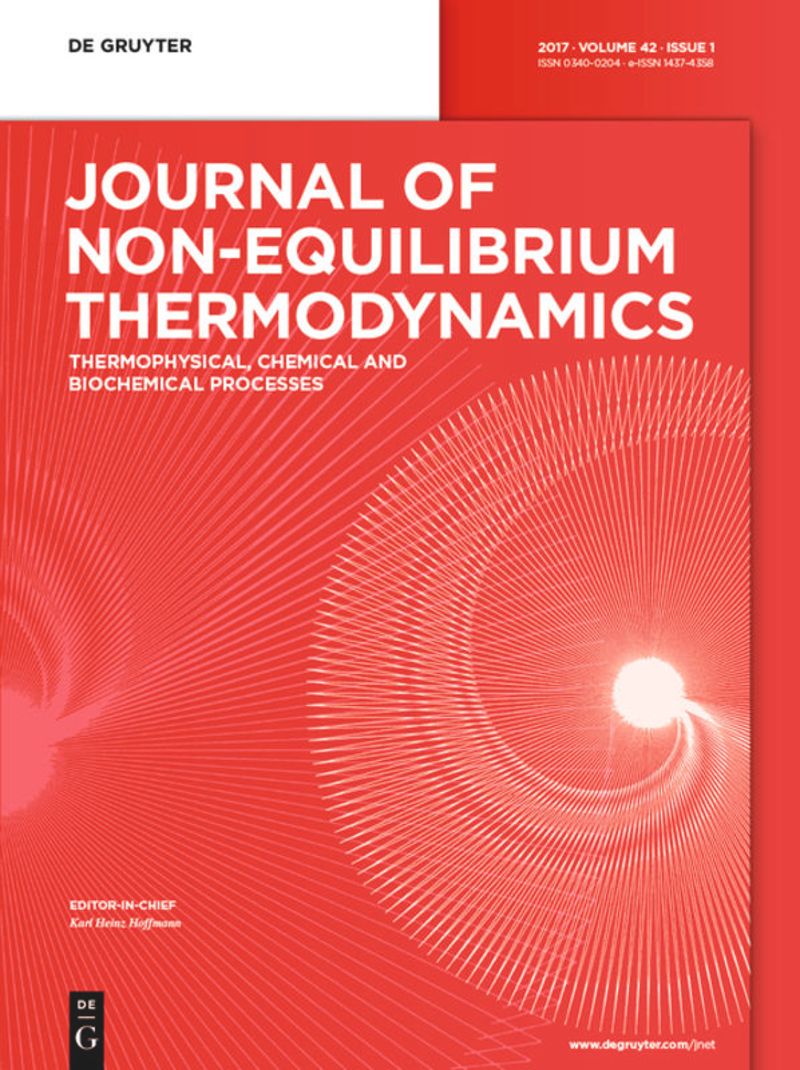重温基于热质理论的非平衡热力学及其在纳米系统中的应用
IF 4.2
3区 工程技术
Q1 MECHANICS
引用次数: 0
摘要
由于傅里叶定律无法解释超快或超小系统中的热传导,因此非傅里叶热传导模型的发展受到了鼓励。传统的非平衡热力学和非傅里叶热传导模型的结合将产生负熵。为了解决这一矛盾,扩展不可逆热力学(EIT)引入了一个新的状态变量。然而,非平衡热力学和 EIT 的广义力和广义通量中仍然缺少力和动量等实际动力学变量。根据热质理论和爱因斯坦的质能关系,热具有质量和能量。热质气体模型建立了包含非傅里叶效应的广义热传导模型。热质理论重塑了非平衡热力学中广义力和通量、温度和熵产生的概念,并重新审视了昂萨格倒易关系中波动线性回归的假设。基于热质理论的广义热传导模型已被用于研究纳米系统中的热导率、热电效应和热整流效应。本文章由计算机程序翻译,如有差异,请以英文原文为准。
Revisit nonequilibrium thermodynamics based on thermomass theory and its applications in nanosystems
The development of non-Fourier heat conduction models is encouraged by the invalidity of Fourier’s law to explain heat conduction in ultrafast or ultrasmall systems. The production of negative entropy will result from the combination of traditional nonequlibrium thermodynamics and non-Fourier heat conduction models. To resolve this paradox, extended irreversible thermodynamics (EIT) introduces a new state variable. However, real dynamics variables like force and momentum are still missing from nonequilibrium thermodynamics and EIT’s generalized force and generalized flux. Heat has both mass and energy, according to thermomass theory and Einstein’s mass-energy relation. The generalized heat conduction model containing non-Fourier effects was established by thermomass gas model. The thermomass theory reshapes the concept of the generalized force and flux, temperature, and entropy production in nonequilibrium thermodynamics and revisits the assumption for the linear regression of the fluctuations in Onsager reciprocal relation. The generalized heat conduction model based on thermomass theory has been used to study thermal conductivity, thermoelectric effect, and thermal rectification effect in nanosystems.
求助全文
通过发布文献求助,成功后即可免费获取论文全文。
去求助
来源期刊
CiteScore
9.10
自引率
18.20%
发文量
31
审稿时长
1 months
期刊介绍:
The Journal of Non-Equilibrium Thermodynamics serves as an international publication organ for new ideas, insights and results on non-equilibrium phenomena in science, engineering and related natural systems. The central aim of the journal is to provide a bridge between science and engineering and to promote scientific exchange on a) newly observed non-equilibrium phenomena, b) analytic or numeric modeling for their interpretation, c) vanguard methods to describe non-equilibrium phenomena.
Contributions should – among others – present novel approaches to analyzing, modeling and optimizing processes of engineering relevance such as transport processes of mass, momentum and energy, separation of fluid phases, reproduction of living cells, or energy conversion. The journal is particularly interested in contributions which add to the basic understanding of non-equilibrium phenomena in science and engineering, with systems of interest ranging from the macro- to the nano-level.
The Journal of Non-Equilibrium Thermodynamics has recently expanded its scope to place new emphasis on theoretical and experimental investigations of non-equilibrium phenomena in thermophysical, chemical, biochemical and abstract model systems of engineering relevance. We are therefore pleased to invite submissions which present newly observed non-equilibrium phenomena, analytic or fuzzy models for their interpretation, or new methods for their description.

 求助内容:
求助内容: 应助结果提醒方式:
应助结果提醒方式:


